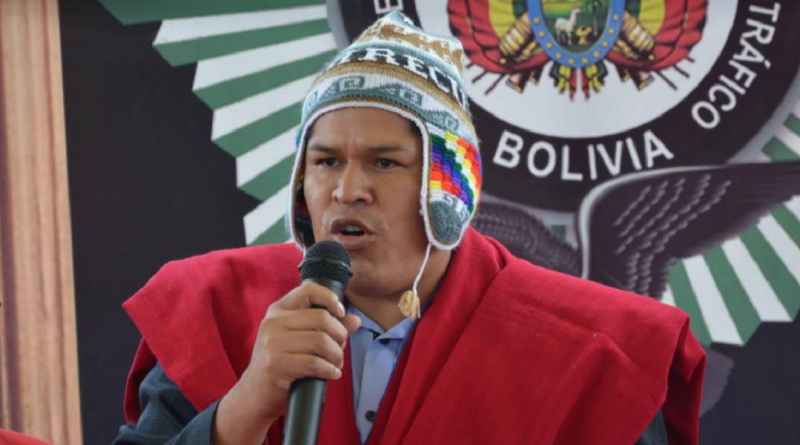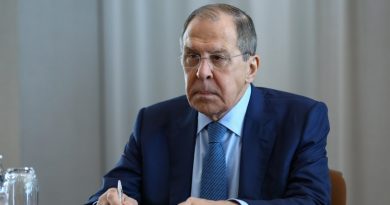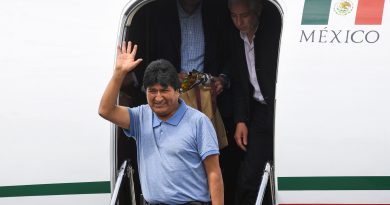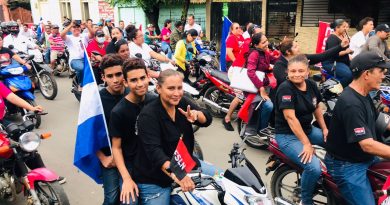Bolivia Reduced Drug Trafficking By Expelling the DEA: Interview
The United States ‘War on Drugs’ in Latin America is synonymous with militarization and armed conflict which remains as fierce today as. The U.S. government, for many decades, has invested vast sums in training Latin American security forces to fight the narcotraffickers who meet the demands of the North American consumer. However, the trade is as lucrative as ever and has only grown in size despite the billions spent in fighting it. Furthermore, rather than challenge the narcos, the U.S.-trained forces have instead focused largely on waging a brutal war on impoverished campesino farmers, drowning rural areas in permanent violence.
In Bolivia, DEA and U.S. military bases were established during the neoliberal with the aim of eradicating the coca leaf. Coca is one ingredient used in the production of cocaine, however, the plant has a huge legitimate market within the country and has been a central component of indigenous culture for over a millennia. In the effort to eradicate coca, Bolivian troops were placed at the service of U.S. commanders who led numerous massacres in the coca-growing regions of the Chapare and the Yungas. Coca grower union leaders, like Evo Morales, were jailed, persecuted, and in some cases even assassinated. Evo has recounted numerous times how he witnessed DEA officials taking part in the massacre of indigenous farmers in the town of Villa Tunari.
In 2005 Evo Morales was elected President and proceeded to expel all U.S. interference in Bolivia and rejected the U.S. model for the ‘War on Drugs’. The result? A reduction in the production of coca and cocaine. Meanwhile, countries that cooperate with the U.S., such as Colombia and Peru, have seen sharp increases in production during the same period.
Kawsachun News spoke to Jaime Mamani Espindola, Bolivia’s Vice Minister for Social Defense and Illicit Substances, about how Bolivia has managed such success after rejecting the U.S. model.
The interview was conducted by Oliver Vargas and Kathryn Ledebur
OV: Why has Bolivia rejected the U.S. ‘war on drugs’? What do you mean by the ‘nationalization of the struggle against narcotrafficking’?
JME: Across the world, and in Bolivia, the U.S. ‘war on drugs has failed. When there was the DEA and U.S. military presence in this country, there was a higher production of coca, and there were a larger number of criminal groups involved in narcotrafficking. Their approach was to target coca leaf producers through forced eradication, they were persecuted and tortured, while narcotraffickers never received that treatment. There were human rights violations on a massive scale. These policies were drawn up abroad and imposing them was a condition for receiving international aid and cooperation. In the period 1996-2005, 60 coca leaf farmers were murdered, 5 disappeared, 700 injured with bullet wounds, 523 arrested.
After 2009, our country began the nationalization of the struggle against narcotrafficking, which is a model that has won international praise because it’s based on consensus and inclusive decision making and on community control. What do we mean by community control? It’s when local unions are given the power to supervise and stop growth in coca production. Part of our success in this approach is the economic aspect, providing alternative forms of income and production for coca growers. In the past 12 years of this model, the government has invested $US 539 million in these communities. Another important aspect is purchasing our own military equipment to monitor coca production and for anti-drug operations, rather than depending on other countries, so we purchased 6 helicopters ‘Superpuma’ costing $US 221 million. This past year, the Anez government abandoned this model and Bolivia became a transit country for drugs from Peru. Last week I was in Beni to announce the recent seizure of drugs coming from Peru that were passing through Bolivia en route to Brazil, before that we seized a similar amount that was passing through La Paz, with the same origin and destination.
We have fought to defeat narcotrafficking and to defeat the big fish of the trade, but Bolivia is not a country that consumes narcotics. Countries, like the U.S., with high rates of consumption, have to make more of an effort to reduce that. With our model, we’ve managed to reduce the production of coca thanks to our ‘law on coca’ that allows a small level production, 22 thousand hectares across the whole country, for the legitimate market. Our success has been because this strategy is our own, not foreign. Since the return of democracy in Bolivia under the leadership of President Luis Arce, we’ve returned to this model. We’re committed to the fight against drugs and narcotraffickers, who have done so much to damage our country and its image.
OV: The link between coca growers and the state was broken after the coup in November 2019. If the coup had lasted several years, do you think all the progress against narcotrafficking could’ve come undone?
JME: It’s important for the world to know what happens when Bolivia drops the model we built since 2009 in Evo Morales’ government. There have been awful results for the 11 months of the coup. They used the Ministry I’m in now to persecute and attack coca leaf growers rather than real narcotrafficking. They paralyzed international cooperation on this issue, they paralyzed the purchase of radars necessary for anti-drug operations.
KL: The 6 Federations and Evo Morales have long been keen to promote the success of Bolivia’s fight against drugs. Can this model be exported to other countries that produce coca? and what are plans for international cooperation?
JME: We work with the UN’s drug agency for monitoring coca production. They help by taking satellite images and we do the work of going out those areas and verifying if there is illegal production. We always promote our model of community control in international forums. We explain that if coca growers are brought on board and guaranteed their right to a small unit of production, then it’s easier to reduce overall production. Countries that have adopted the U.S. model have failed to achieve the reductions that we have. Our achievements are thanks to the cooperation of the coca growers unions in the Trópico of Cochabamba and Yungas, we’ve built a model that’s praised around the world. Nevertheless, we still need to strengthen international cooperation on this issue, we should create an international organization to train people and share experiences.
OV: Another success of the Bolivian model seems to be the low levels of violent crime in the country. Of course, there does exist delinquency and pretty crime, but we are nowhere near the homicide rates of countries like Colombia or Mexico which have historically adopted the U.S. model.
JME: Thanks to the nationalization of the fight against narcotrafficking, we no longer have groups of international organized crime within the country. We’ve done this by drawing up a policy within the country and working alongside those it affects and who have knowledge of the territory. This would not work if foreign forces came in to fight the war on drugs, because their war on drugs is not about drugs, it’s about entering and taking control of our natural resources. That is why their war on drugs was focused on persecuting union leaders in our country. There was a higher level of drug trafficking here in the 70s and 80s and onwards, and that’s when they, for example, assassinated the historic coca growers union leader Casimiro Huanca. We need instead, cooperation across Latin America, to ensure that international crime groups do not enter our country, the damage they would do is huge.



